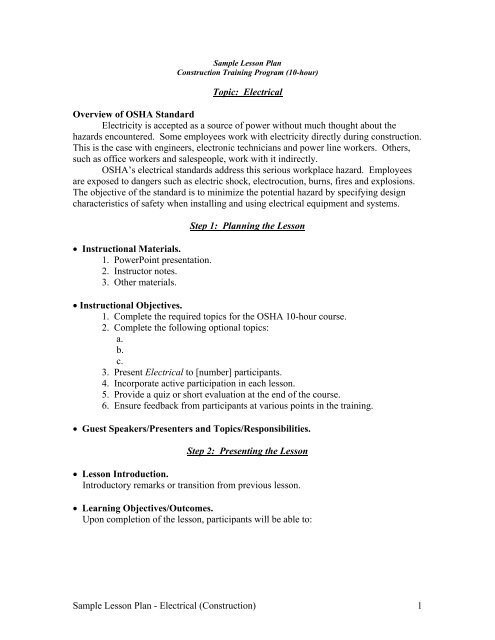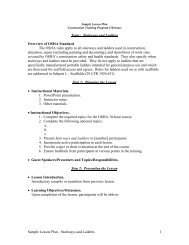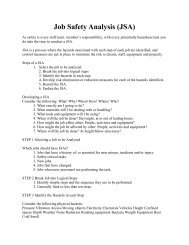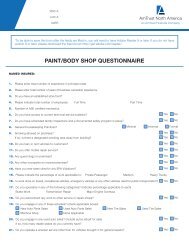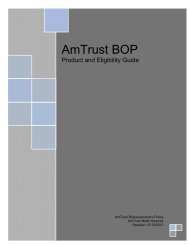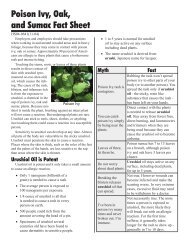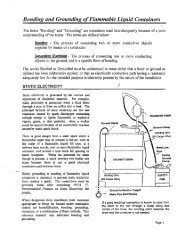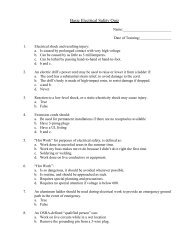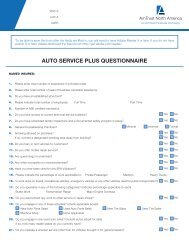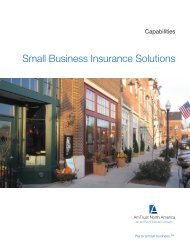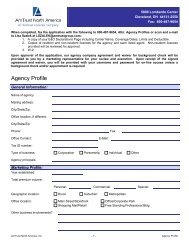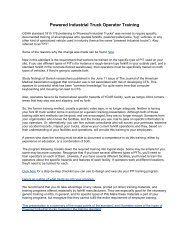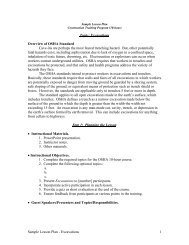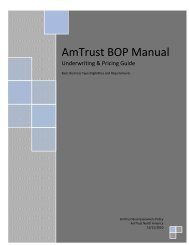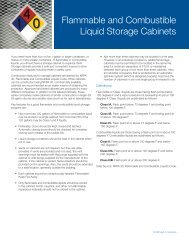Sample Lesson Plan - Electrical (Construction) 1 Topic: Electrical ...
Sample Lesson Plan - Electrical (Construction) 1 Topic: Electrical ...
Sample Lesson Plan - Electrical (Construction) 1 Topic: Electrical ...
Create successful ePaper yourself
Turn your PDF publications into a flip-book with our unique Google optimized e-Paper software.
<strong>Sample</strong> <strong>Lesson</strong> <strong>Plan</strong><br />
<strong>Construction</strong> Training Program (10-hour)<br />
<strong>Topic</strong>: <strong>Electrical</strong><br />
Overview of OSHA Standard<br />
Electricity is accepted as a source of power without much thought about the<br />
hazards encountered. Some employees work with electricity directly during construction.<br />
This is the case with engineers, electronic technicians and power line workers. Others,<br />
such as office workers and salespeople, work with it indirectly.<br />
OSHA’s electrical standards address this serious workplace hazard. Employees<br />
are exposed to dangers such as electric shock, electrocution, burns, fires and explosions.<br />
The objective of the standard is to minimize the potential hazard by specifying design<br />
characteristics of safety when installing and using electrical equipment and systems.<br />
• Instructional Materials.<br />
1. PowerPoint presentation.<br />
2. Instructor notes.<br />
3. Other materials.<br />
Step 1: <strong>Plan</strong>ning the <strong>Lesson</strong><br />
• Instructional Objectives.<br />
1. Complete the required topics for the OSHA 10-hour course.<br />
2. Complete the following optional topics:<br />
a.<br />
b.<br />
c.<br />
3. Present <strong>Electrical</strong> to [number] participants.<br />
4. Incorporate active participation in each lesson.<br />
5. Provide a quiz or short evaluation at the end of the course.<br />
6. Ensure feedback from participants at various points in the training.<br />
• Guest Speakers/Presenters and <strong>Topic</strong>s/Responsibilities.<br />
Step 2: Presenting the <strong>Lesson</strong><br />
• <strong>Lesson</strong> Introduction.<br />
Introductory remarks or transition from previous lesson.<br />
• Learning Objectives/Outcomes.<br />
Upon completion of the lesson, participants will be able to:<br />
<strong>Sample</strong> <strong>Lesson</strong> <strong>Plan</strong> - <strong>Electrical</strong> (<strong>Construction</strong>) 1
• Learning Objectives/Outcomes. (Continued)<br />
1. Describe four types of injuries that may result from contact with electricity.<br />
Possible responses.<br />
• electrocution or death due to electrical shock<br />
• electrical shock<br />
• burns<br />
• falls<br />
2. Name at least three warning signs or clues an electrical hazard exists.<br />
Possible responses.<br />
• A CFCI that shuts off a circuit<br />
• Tripped circuit breakers or blown fuses<br />
• Warm tools, wires, cords or connection boxes<br />
• Worn or frayed insulation around a wire or connector<br />
• Water or dampness near electrical circuits, wires, outlets or power tools<br />
3. List at least five electrical hazards that may be present at a construction site.<br />
Possible responses.<br />
• inadequate wiring<br />
• exposed electrical parts<br />
• wires with bad insulation<br />
• ungrounded electrical systems or tools<br />
• overloaded circuits<br />
• damaged power tools and equipment<br />
• using wrong PPE or tools<br />
• overhead power lines<br />
• wet conditions<br />
4. Discuss at least three methods of protection from electrical hazards.<br />
Possible responses.<br />
• use proper grounding<br />
• use proper sized circuit breakers and GFCI’s<br />
• guard live electrical parts<br />
• lockout/tagout<br />
• proper use of flexible cords<br />
• close electrical panels<br />
• de-energize overhead power lines<br />
• <strong>Plan</strong>ned Activities, Discussion, or Participant Interaction<br />
<strong>Sample</strong> <strong>Lesson</strong> <strong>Plan</strong> - <strong>Electrical</strong> (<strong>Construction</strong>) 2
Step 3: Evaluating Student Learning and Instruction<br />
• <strong>Lesson</strong> Evaluation and Comments.<br />
References<br />
OSHA Standard: 29 CFR 1926 Subpart K - <strong>Electrical</strong> (1926.400 to 1926.449)<br />
‣ www.osha-slc.gov/OshStd_toc/OSHA_Std_toc_1926_SUBPART_K.html<br />
OSHA Publications<br />
‣ www.osha-slc.gov/OshDoc/Additional.html<br />
• 3007 Ground Fault Protection On <strong>Construction</strong> Sites<br />
• 3075 Controlling <strong>Electrical</strong> Hazards<br />
OSHA References/Resources<br />
• ELCOSH - Safety Hazards - <strong>Electrical</strong><br />
‣ www.cdc.gov/niosh/elcosh/docs/hazard/safety.html<br />
• Electronic Library of <strong>Construction</strong> Occupational Safety and Health (ELCOSH) -<br />
<strong>Electrical</strong> Worker<br />
‣ www.cdc.gov/niosh/elcosh/docs/trade/electrical.html<br />
• OSHA <strong>Construction</strong> eCAT - <strong>Electrical</strong> Incidents<br />
‣ www.osha-slc.gov/SLTC/construction_ecat/electrical_incidents/mainpage.html<br />
• OSHA Technical Links - <strong>Construction</strong>: <strong>Electrical</strong><br />
‣ www.osha-slc.gov/SLTC/constructionelectrical/index.html<br />
• OSHA Videos - Ground Fault Protection on <strong>Construction</strong> Sites<br />
‣ www.osha-slc.gov/SLTC/multimedia.html<br />
<strong>Sample</strong> <strong>Lesson</strong> <strong>Plan</strong> - <strong>Electrical</strong> (<strong>Construction</strong>) 3


